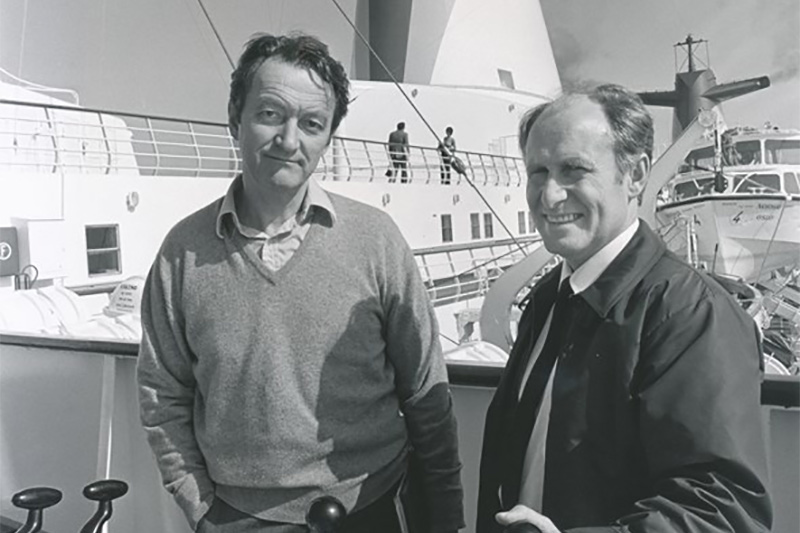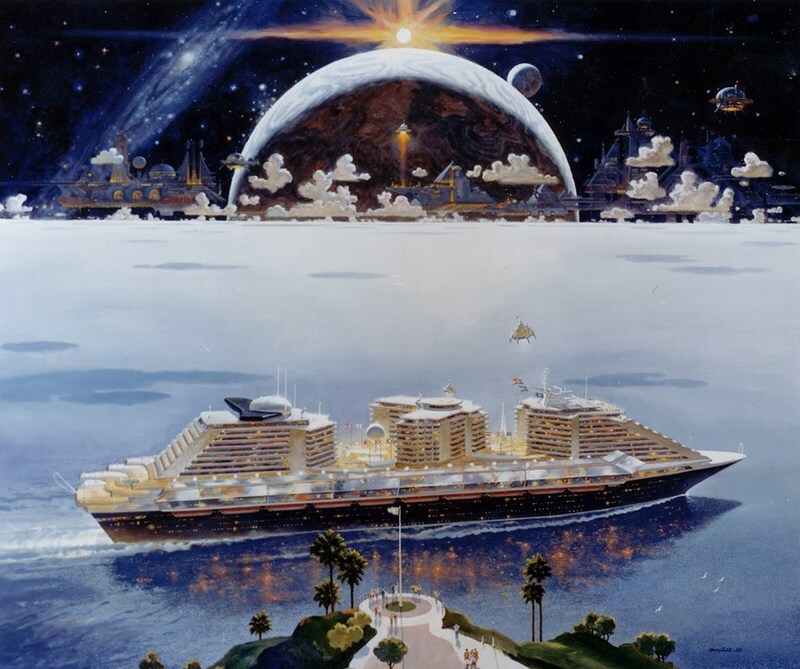
Recognized as the founder of the modern-day cruise industry, Norwegian Knut Kloster (pictured above, left, with Captain Torbjorn Hauge on the Norway) has passed away at 91. He also built a reputation as a visionary, an idealist and humanitarian for whom corporate social responsibility was a key performance metric.
Kloster founded Norwegian Caribbean Line s(NCL) in 1966 and launched service out of Miami with the new Sunward.
Today, the company is known as Norwegian Cruise Line.
Related: The 2015 Cruise Industry News interview with Knut Kloster, A Man of Vision.
The initial NCL fleet grew to four ships in the 700 to 900-passenger range until 1980, when Kloster launched the 76,000-ton, 2,000-passenger S/S Norway, the former Atlantic liner the S/S France.
He bought the then laid-up 1960-built S/S France in 1979 and converted her into what was then by far the largest and most innovative cruise ship. Danish naval architect Tage Wandborg was responsible for the structural changes and Angelo Donghia of New York for the interior design. The conversion work was done at Lloyd Werft Bremerhaven.
Meanwhile, during the 1970’s Kloster had also introduced the first private out-island in the industry, in addition to having a program whereby passengers could sail to Jamaica and spend a week ashore at a company managed resort, before joining the ship again, sailing back the following week. His thinking behind the land program was to have passengers experience different cultures. Thus, in the mid-1970s he was also pioneering the destination immersion that some cruise brands are pursuing today.
The company was eventually reorganized into Klosters Rederi which in turn owned NCL and also acquired Royal Cruise Line and Royal Viking Line.

Kloster never stopped being innovative. In the mid-1980s he established a new company called World City and introduced the Phoenix. At 250,000 tons, the ship was designed to carry 5,200 passengers.
The Phoenix almost happened but shipyards backed off taking on the giant project, as did investors. It was 25 years ahead of its time.
Other projects followed including concepts for a conference and a world peace boat, Lunas, hosting world leaders, like a floating United Nations, going to where the issues and people were.
Kloster was also instrumental in creating the Norwegian pavilion at Disney’s Epcot in Orlando; he played a key role in developing a traditional Norwegian village for the 1994 Winter Olympics Games in Lillehammer; and he sponsored the 15,000 mile journey of a replica Viking ship, the Gaia, which was said to have gathered thousands of messages from children and delivered them to world leaders in Rio de Janeiro at the 1992 Earth Summit.
One story that serves to illustrate Kloster was when he was first found an out-island and it turned out the beach area was breeding ground for sharks. The local authorities offered to dynamite away the sharks, but Kloster said no, “the sharks were there first.” So, he found another island that still today is Norwegian Cruise Line’s Great Stirrup Cay.




